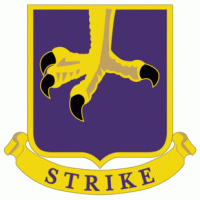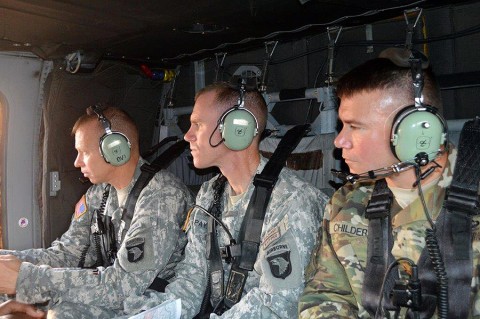Written by Maj. Ireka Sanders
2nd Brigade Combat Team, 101st Airborne Division (AA) Public Affairs


Fort Polk, LA – Before a screaming eagle Soldier can air assault into an objective, staffs have to endure the arduous process of planning. Soldiers from 2nd Brigade Combat Team, 101st Airborne Division (Air Assault) took part in a Leader Training Program here August 4th-11th to train for the “Strike” brigade’s rotation at the Joint Readiness Training Center this fall.
LTP enhances the brigade’s ability to execute the Military Decision Making Process and conduct planning. The staff sections from the brigade, battalions, and squadrons, and specialty company command teams, prepared and executed the tactical operations orders for a JRTC decisive action scenario.

The goals for Strike were to ensure all commanders and staff training objectives were identified, and all standard operating procedures were validated and refined.
These goals were met by a fresh, new team. In late June the brigade, three battalion commanders, and multiple staff officers across the brigade transitioned into their new positions.
“We all have only been in our seats for just a couple months,” said Col. Brett N. Sylvia, Strike’s commander. “This LTP comes at the perfect time for us.”
Some of Sylvia’s goals for the LTP exercise were to develop the operational approach and get to a deeper understanding of our capabilities.
“When we are developing our operational approach, we need to see three things. Those three things are ourselves, the enemy and the environment, said Sylvia. “If we can see ourselves – if we have a deep understanding of ourselves – I think that will take us a majority of the way there. That’s what a program like this is designed to do.”
The training focused heavily on the orders production process and the delivery of clear, concise orders that enable units to effectively conduct their missions within the commander’s guidance.
“Like it or not, when we come to JRTC it is not to train our squads; it’s not to train even platoons. This entire JRTC environment, with a thinking enemy, exists to train you all,” said Sylvia to the leaders in attendance. “It exists to train our leaders; it exists to train our staff. Because this is the only time we are going to be truly exercised. It is our responsibility – it is our sacred obligation – to put our Soldiers at the right place on the battlefield, with the right equipment and at the right time.”
All enabling and supporting units also attended LTP to plan and coordinate with the brigade for the upcoming training. The enabling units not only included Army assets but elements from other branches.
“This training is an excellent way to run through what we would do in a real fight,” said Huhmann. “So this is the place to make the mistakes. When we actually get to the battle, we will already have a shared understanding of what our capabilities are and how we can collectively impact the fight.”
At the start of mission analysis, Maj. Michael Haith, Strike brigade’s executive officer, motivated Strike staff by telling his personal war experiences and the implication of getting the planning process wrong. Afterward he posed one question.
“What have you done for him [the Soldier on the front line] today?” Imploring the staff to stay focused and vigilant during the planning process to give the Soldier on the ground the best opportunity to accomplish his/her mission and return to home station.


